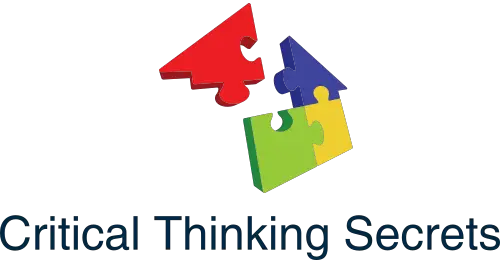In the fast-paced world of business, organizations seek effective methods to stay ahead. The systems thinking approach to strategic planning and management offers a comprehensive view that helps leaders understand complex interactions within their companies.
This holistic perspective can be the key to navigating today’s challenges and uncertainties. Organizations that embrace systems thinking can achieve long-term success by aligning their strategies with the interconnected elements of their environment.

At its core, systems thinking is about seeing the bigger picture. It involves recognizing the relationships and patterns that exist within and outside the organization.
By using this method, leaders can make informed decisions that consider both immediate outcomes and long-term impacts. This approach to management encourages adaptability and fosters a strong organizational culture.
Strategic planning becomes more effective when combined with systems thinking. This approach enables managers to create strategies that are not only efficient but also sustainable in the long run.
By understanding how different components of the organization interact, leaders can better anticipate challenges and identify opportunities for growth.
Key Takeaways
- Systems thinking provides a comprehensive view of organizational interactions.
- Strategic planning is enhanced by understanding system interconnections.
- Adopting systems thinking leads to sustainable long-term success.
Fundamentals of Systems Thinking

Systems thinking is a method for understanding complex problems by viewing them as part of an interconnected whole. It helps people see patterns and relationships rather than isolated events.
Key components include understanding systems theory, applying core principles, and how organizations benefit from using this approach.
Understanding Systems Theory
Systems theory examines how parts within a whole interact to produce outcomes. This framework suggests that individual components cannot be fully understood in isolation. Instead, they operate within larger social systems, impacting and shaping each other.
This theory is essential for identifying the structures and behaviors in complex systems. By analyzing these interactions, one can predict changes and outcomes more effectively. Systems theory provides the foundation for strategic thinking approaches that aim to address intricate issues.
Principles of Systems Thinking
Core principles of systems thinking involve recognizing cause and effect over time, focusing on overall systems rather than individual elements.
Understanding feedback loops—when outputs of a system loop back and affect the system itself—is crucial. Equally important is identifying leverage points where small changes can lead to significant impacts.
Emphasizing the whole process instead of isolated parts helps to avoid unintended consequences. These principles enable more effective decision-making and foster innovative solutions to complex problems.
Systems Thinking in Organizations
Organizations using a systems thinking approach benefit by improving problem-solving skills. It encourages holistic thinking, allowing for better decision-making and strategic planning.
By viewing an organization as a part of larger social systems, leaders can identify potential impacts of their decisions on various stakeholders.
Applying systems thinking helps in managing complex tasks, integrating changes, and adapting to challenges effectively. This comprehensive outlook empowers organizations to become more resilient and adaptive in dynamic environments.
Strategic Planning Process

Strategic planning involves setting long-term goals and deciding how to achieve them effectively. Systems thinking adds depth to this process by considering how different components interact to form a cohesive strategy.
This approach aims to enhance strategic management by improving foresight and adaptability.
Defining Strategic Planning
Strategic planning is a systematic process for defining an organization’s direction and making decisions on allocating resources to pursue this direction. It begins with establishing a clear mission and vision. Goals are then set to bridge current realities with desired futures.
This careful planning helps organizations stay competitive by making informed decisions that align with their long-term objectives.
Key Elements of Strategic Planning:
- Mission Statement: Defines the organization’s purpose.
- Vision Statement: Paints a picture of the future.
- Goals: Specific, measurable achievements.
- Resource Allocation: Efficient use of resources.
- Monitoring: Tracking progress and adapting as needed.
Role of Systems Thinking in Strategic Planning
Systems thinking introduces a holistic view of strategic planning by examining the interconnections between various elements within an organization.
This approach helps planners see patterns and relationships that might not be apparent through traditional methods.
By understanding these links, planners can anticipate challenges and opportunities, making strategies more resilient.
Systems thinking also emphasizes feedback loops, ensuring that decision-makers can adjust strategies based on outcomes and evolving conditions.
This adaptability is crucial for thriving in complex environments where change is constant.
Phases of Strategic Planning
Strategic planning typically consists of several key phases.
The first phase, Assessment, involves analyzing both the internal and external environments.
Next, the Formulation phase develops strategies based on this assessment. The Implementation phase puts these strategies into action, involving all stakeholders in the process.
Finally, the Evaluation phase measures success against set goals, allowing for adjustments and improvements.
Throughout these phases, systems thinking can enhance strategic management by encouraging an integrated approach, facilitating more nuanced and effective planning outcomes. This framework supports organizations in navigating complexity and fostering long-term success.
Strategic Management and Leadership
In the realm of strategic management, the integration of leadership is crucial for effective strategy development and execution. Both elements work together to drive organizational success, ensuring that plans align with overall business goals and are implemented efficiently.
Connecting Strategy Development and Leadership
Leadership is essential for developing a sound strategy that aligns with the organization’s vision and goals.
Leaders play a pivotal role in analyzing the environment, identifying opportunities and risks, and setting clear objectives. They foster a collaborative environment, encouraging input from various departments to create well-rounded strategies.
Effective leaders facilitate open communication and sustain a culture of trust. They provide direction while allowing team members to contribute their expertise.
This collaborative approach strengthens the strategic framework and aligns efforts across the organization. Moreover, leaders prioritize adaptability, ensuring that strategies can be revised as needed in response to changing market conditions or internal developments.
Leadership’s Role in Strategy Execution
Once a strategy is developed, leadership becomes vital in the execution phase.
Leaders are responsible for communicating the strategic vision to the entire organization. Clear communication ensures that everyone understands their role in achieving strategic goals.
Leaders must also motivate and inspire their teams to foster engagement and commitment.
In the execution phase, leaders play an important role in monitoring progress and making adjustments as necessary.
They must address any barriers or challenges that emerge, ensuring resources are effectively allocated to achieve strategic objectives.
They also assess performance against key metrics to ensure alignment with the strategic plan and make course corrections when necessary. This ongoing guidance helps maintain momentum and drive successful outcomes.
Systems Thinking Tools and Approaches
In the realm of systems thinking, several tools and methodologies are key to effective strategic planning and management. These include Soft Systems Methodology, Viable System Model, System Dynamics, and Critical Systems Heuristics. Each of these approaches offers unique insights and strategies to address complex organizational challenges.
Soft Systems Methodology
Soft Systems Methodology (SSM) is a qualitative approach used to tackle unstructured problems. It emphasizes understanding different perspectives in a situation.
Developed by Peter Checkland, SSM is especially useful in complex, people-oriented situations where there is no clear problem or solution.
The methodology involves several stages, including problem situation identification, expression through rich pictures, and conceptual models.
It’s a flexible method that values stakeholder input and emphasizes iterative learning and adaptation.
SSM guides users in constructing models that help explore possible changes, rather than aiming for a definite answer. This makes it a valuable tool in situations where human factors are significant, such as organizational change or community development.
Viable System Model
The Viable System Model (VSM) is a framework for diagnosing the health of an organization. Created by Stafford Beer, VSM examines the organization’s ability to remain viable in a changing environment.
It emphasizes balance within five subsystems: policy, intelligence, control, coordination, and operations.
Organizations can use VSM to evaluate their response to internal and external challenges. The model provides a structure to analyze communication and control systems.
VSM aims to ensure that an organization can adapt and thrive despite uncertainties. This approach is particularly useful for assessing the overall system’s viability and sustainability.
System Dynamics
System Dynamics is a quantitative tool focusing on feedback loops and time delays. Developed by Jay W. Forrester, it uses computer simulations to model complex interactions.
This approach helps in understanding how change affects systems over time.
Key elements include stocks, flows, and feedback loops. Visualizing these components can demonstrate potential impacts of different scenarios.
System dynamics is often used for strategic planning to predict long-term outcomes.
The ability to simulate different strategies makes it an effective tool for policy analysis, resource management, and understanding ecosystem dynamics.
Critical Systems Heuristics
Critical Systems Heuristics (CSH) offers a way to reflect on the assumptions underlying systems design and evaluation. Developed by Werner Ulrich, CSH encourages critical reflection and debate about who benefits from the system and who might be marginalized.
The method focuses on twelve critical boundary questions. These questions guide practitioners to consider different stakeholders’ viewpoints and the values shaping decision-making processes.
CSH’s primary aim is to ensure inclusiveness and fairness in systems analysis. It is particularly valuable when addressing ethical dimensions of strategic decisions and ensuring that systems are designed with social justice in mind.
Decision Making in Systems Thinking
Systems thinking in decision making involves analyzing complex systems and focusing on relationships between components. This approach improves strategic decisions and considers broader perspectives using critical systems thinking.
Strategic Decision Making
Strategic decision making in systems thinking involves evaluating interconnected components. This approach helps organizations adapt to changes and enhances long-term planning.
Tools like feedback loops and causal loop diagrams are often used. These tools allow decision-makers to visualize the potential impact of their choices on the entire system.
This method aligns with strategic goals and ensures more consistent outcomes.
Incorporating systems thinking into strategic management enables organizations to identify opportunities and mitigate risks. It helps in prioritizing actions that are aligned with core objectives.
Critical Systems Thinking for Decision Making
Critical systems thinking encourages decision-makers to consider multiple viewpoints. It evaluates assumptions and addresses complex problems with a holistic approach.
By challenging established norms, it promotes innovative solutions and comprehensive analysis.
This perspective involves understanding the consequences of various decisions and anticipating future scenarios.
Decision-makers consider ethical implications, stakeholder interests, and long-term effects within the system’s framework.
Encouraging collaboration and open dialogue among teams is essential. It enriches the decision-making process by combining different expertise and perspectives. This inclusive approach contributes to more informed and balanced decisions.
Organizational Change and Development
In organizational settings, using systems thinking can streamline strategic planning and improve management efficiency. This approach emphasizes understanding complex systems and making informed decisions during change processes.
Change Management in a Strategic Context
Change management is vital in adapting to new business realities. By focusing on strategic goals, organizations can align their change initiatives with their long-term mission.
An effective change management plan includes clear communication, leadership commitment, and employee engagement.
A strategic context helps determine priorities and allocate resources efficiently.
Establishing metrics to track progress and adjust strategies in real-time ensures success.
Embracing a strategic framework fosters resilience and adaptability, enabling organizations to thrive amid evolving challenges.
Leveraging Systems Thinking for Change
A systems thinking approach offers a holistic view of how different organizational parts connect and influence each other. This perspective identifies interdependencies and potential ripple effects of changes.
By considering the broader system, decision-makers can anticipate challenges and create comprehensive solutions.
Systems thinking encourages collaboration across departments to solve complex problems. Involving diverse perspectives results in more innovative strategies. This approach fosters a culture of continuous learning and adaptation, driving effective implementation of change initiatives.
Adopting systems thinking can lead to more sustainable organizational growth and development.
Achieving Competitive Advantage
Achieving competitive advantage involves strategic development that integrates systems thinking. By utilizing a detailed approach, organizations can maintain their unique position in the market and adapt to ever-changing environments.
Sustaining Advantage through Systems Approaches
Sustaining a competitive advantage requires integrating systems thinking into strategy development. Systems thinking helps organizations view their operations as interconnected parts of a larger framework. This perspective enables businesses to identify patterns and leverage their strengths effectively.
A key strategy is establishing a distinctive value proposition that sets an organization apart. It includes creating unique products or services that meet customer needs better than competitors.
Combining this with a systems approach ensures the alignment of all business processes and resources toward this goal.
Additionally, systems thinking promotes adaptability. By continuously assessing and improving internal processes, organizations can quickly respond to external changes. This adaptability fosters long-term success and maintains the company’s market position.
An integrated approach ensures that strategic planning and execution remain aligned with broader organizational goals.
Knowledge Management and Systems Thinking
Knowledge management involves the efficient handling of information and resources within organizations. Systems thinking provides a comprehensive view, enabling a structured approach to managing knowledge. This section explores the integration of these concepts for better organizational outcomes.
Integrating Knowledge Management with Systems Approaches
Integrating knowledge management with systems thinking requires a holistic view of information flow within an organization. Systems thinking frameworks help to map and understand complex interactions between various elements of a system. They ensure that information is used effectively across the organization.
A detailed understanding of systems can improve decision-making processes by recognizing patterns and interdependencies.
For instance, a systems thinking framework can be used for knowledge management in an organization by identifying core processes and relationships that drive information flow. This approach encourages collaboration and helps organizations adapt to changes efficiently.
By applying systems thinking, managers can create flexible strategies that integrate learning mechanisms. This provides a foundation for continuous improvement, ensuring that knowledge is leveraged optimally.
Research shows that systems approaches can enhance strategic planning, as they align organizational resources with long-term objectives.
Using a systems perspective, organizations can build a robust structure that supports both knowledge management and strategic goals.
Systems Thinking in Health and Social Systems
Systems thinking plays a critical role in both healthcare management and addressing challenges in social systems. It helps organizations understand complex interactions and adapt to changing environments.
Applying Systems Thinking in Healthcare Management
In healthcare, systems thinking is crucial for improving patient outcomes and efficiency. It involves looking at the entire healthcare delivery process, identifying interdependencies, and understanding how changes affect the whole system. System dynamics is a tool used to simulate and analyze these interactions.
Healthcare managers leverage systems thinking to reduce waste and enhance quality. They focus on interconnected processes like patient flow, resource allocation, and staff collaboration. This approach promotes coordination among departments, preventing issues before they occur.
By viewing healthcare as a complex system, hospitals can innovate and implement effective strategies. They can respond to changes in technology, policy, and patient needs with greater agility.
Systems Approaches to Social Systems Challenges
In social systems, systems thinking addresses complex societal issues by examining the linkages and interactions among elements. Complex adaptive systems theory helps understand how social systems evolve and adapt over time. This approach is used to tackle problems like poverty, education, and community health.
By using systems thinking, policymakers and organizations can identify leverage points for effective interventions. They ensure that efforts to improve social conditions consider both short-term and long-term impacts.
Systems approaches also encourage collaboration among various stakeholders, including government agencies, nonprofits, and community groups. Through these partnerships, they can develop sustainable solutions that address root causes.
Effective problem-solving in social systems often requires innovative thinking and the ability to navigate dynamic environments.
Frequently Asked Questions
Systems thinking in strategic management offers a comprehensive way to view and address organizational challenges. It enhances planning, bolsters leadership, and improves problem-solving, while also posing certain challenges.
How can a systems thinking approach enhance strategic planning process?
By viewing an organization as a cohesive whole, systems thinking allows for better alignment of goals and resources. This approach ensures that all parts of the organization work together effectively, maximizing the impact of strategic plans.
What are the core principles of systems thinking in an organizational context?
Key principles include understanding the interconnections within the organization, focusing on feedback loops, and recognizing patterns over time. These principles help in predicting potential outcomes and improving decision-making processes.
In what ways does systems thinking influence leadership and management decisions?
Systems thinking encourages leaders to consider how decisions affect the entire organization, rather than isolated parts. This holistic approach can lead to more informed and sustainable management practices.
Can systems thinking be integrated with existing strategic management frameworks?
Yes, systems thinking can complement traditional management frameworks by providing a broader perspective. It can enhance practices like SWOT analysis and balanced scorecards by highlighting interdependencies and long-term impacts.
How does systems thinking facilitate problem-solving within complex business environments?
By emphasizing relationships and interactions within the organization, systems thinking helps in identifying root causes of problems. This comprehensive analysis can lead to more effective and sustainable solutions.
What are the challenges of implementing a systems thinking approach in strategic management?
Some challenges include the initial complexity of understanding systems thinking principles. Also, there may be potential resistance to change.
It requires a shift in mindset and organizational culture. This shift can be time-consuming and difficult to achieve.





